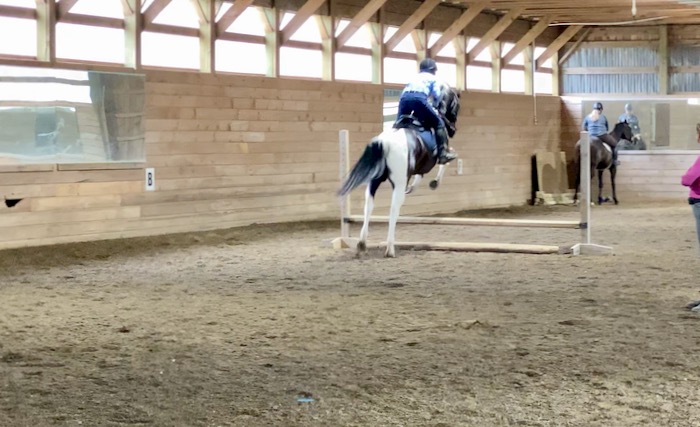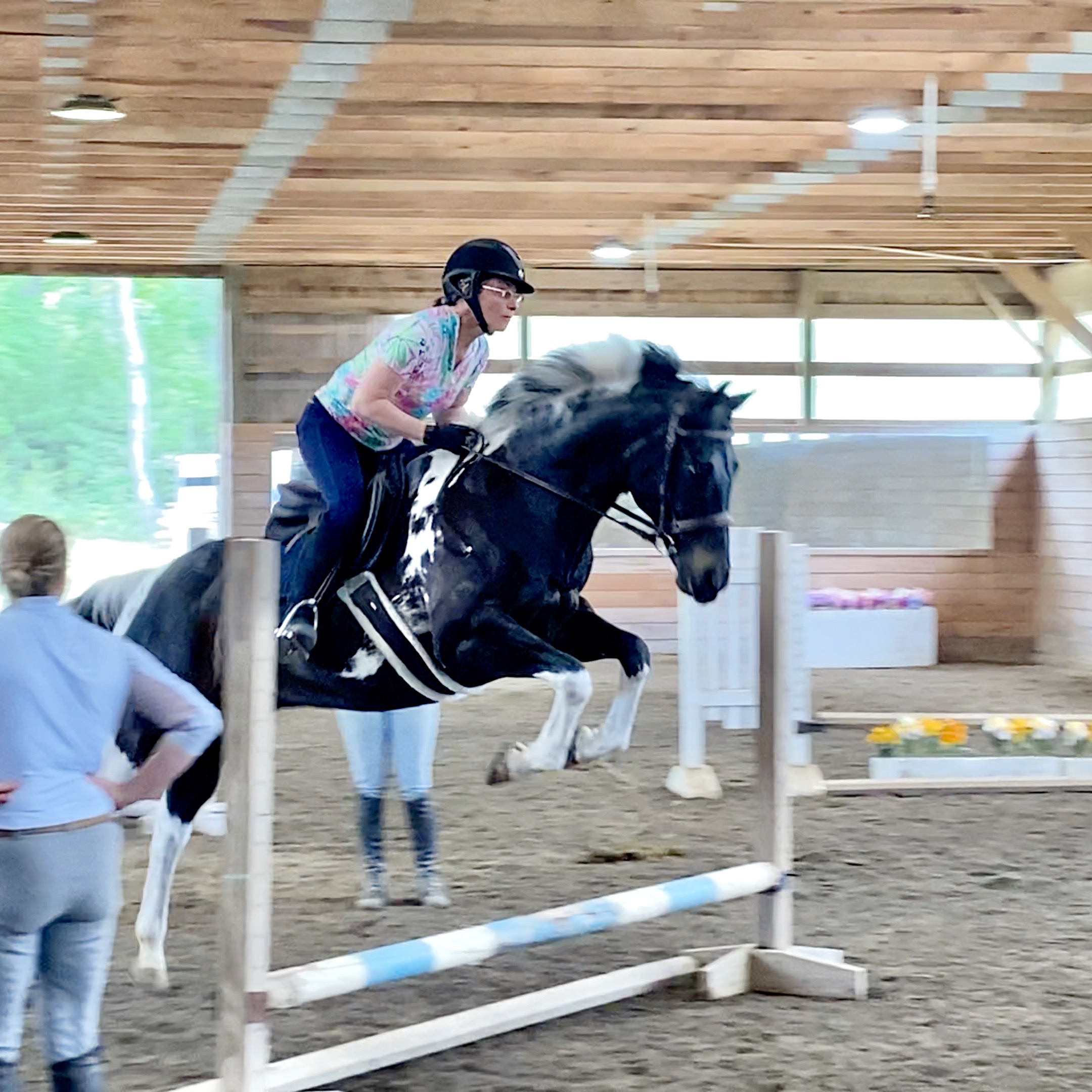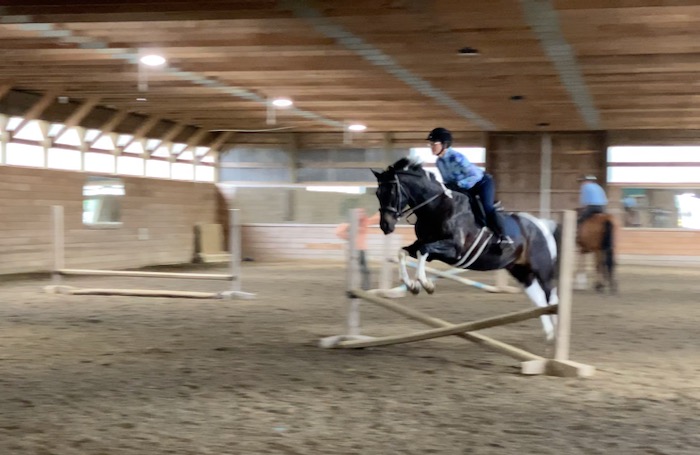When jumping your horse over an obstacle, that moment in the air when you’re soaring over the fence is the least of it. It’s the getting to the jump that matters. Riders talk about seeing the perfect stride – as you approach you know exactly where your horse’s legs are and when they’re going to lift off. Get to the jump so that happens at exactly the right place and you ride a perfect arc over the jump. Get it wrong and you crash and burn. Or at least go flat, or knock a rail, or take a hurried last stride. Getting it right requires you to know your horse’s natural gaits, be able to adjust them like an accordion, and also to judge where you are. Seeing the distance is something that equestrians work on for years. Horses have to work on it, too. Getting it right, so that it feels intuitive, takes experience. Tonka and I have a long way to go.
Sometimes I feel like we are trying out different approaches to the jumps the way Goldilocks tried out beds. This stride is too short. This photo shows a jump where we almost ran right into the obstacle. Other horses might have stopped or knocked it down. Not Tonka. He goes up, up, up and over. Impressive, but not a feat you want to replicate.

This stride is too long. I misjudged this and asked Tonka to jump way too early. He was amenable to that idea. Again, Tonka saves the day. He goes big and lands it.

After the big jump, I try to get a modest-sized effort that matches this low jump height. Tonka does it, but his knees don’t snap. Tonka did the jump just fine, but in his opinion, This jump is too small. After he does one like this, the next one shows a lot more style.

This is how Tonka would like every jump to be. Come in just right so that he can snap his knees, tuck his toes and show off his perfect bascule. This jump is just right.

Here’s a little video clip of that.
My Goldilocks horse would appreciate it if we have more of those just right jumps. I’m trying to get out of his way and let it happen. Clearly, he’s the half of this team with the eye for jumping.


Looks like he nails the change, too, in that video! Looks like you both have good eyes for jumping. 🙂
Our canter and changes still need a lot of work! That short clip makes us look good 🙂
In the late 70s, I had the good fortune to participate in a clinic at which Rodney Jenkins was one of the coaches. (I’m a thousand years old…). Rodney was a very famous rider back then and his 13 year partnership with an ex racehorse turned show jumper and renamed Idle Dice, was legendary. I don’t remember everything about that clinic, but I do remember Rodney saying that the reason he and Idle Dice (whom he called Ike) had done so well for so long had nothing to do with Rodney’s riding. Idle Dice was the only horse Rodney had ever ridden who needed zero interference or guidance from his rider, other than a gentle touch on the reins to point him to the next fence. Apparently, the horse’s ability to gauge distance, height and speed was near perfect. Even in Events with jumps at 7’, if you watch the films, Rodney approaches each fence dead quiet on Idle Dice’s back, and with an almost loose rein. The horse was known for raising his head quite high on the approach and at one time Rodney tried a running martingale on the horse. He had us all laughing when he said every time the horse bumped into the martingale’s correction he would come to a screeching halt and buck. Rodney said he did absolutely nothing on the approach, no leg, no seat adjustments, no weight shift, no rein contact….nothing. The horse knew his business and calibrated it all by himself. Only horse he ever rode like it. He said his only contribution he really made was that he listened to the horse. “And he told me loud and clear to just shut up and get out of his way. So I did.”
I’ve never ridden one like that!
Equally many years ago, I snuck downstairs at Madison Square Garden to see the horses in their stalls. Idle Dice was in cross-ties and the groom was grooming. I was allowed to pet him. A magnificent horse.